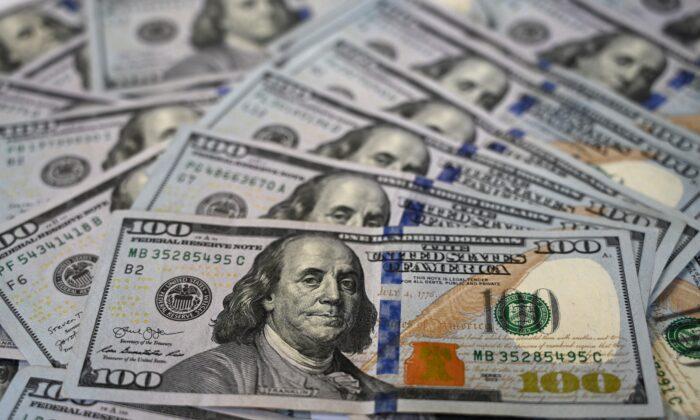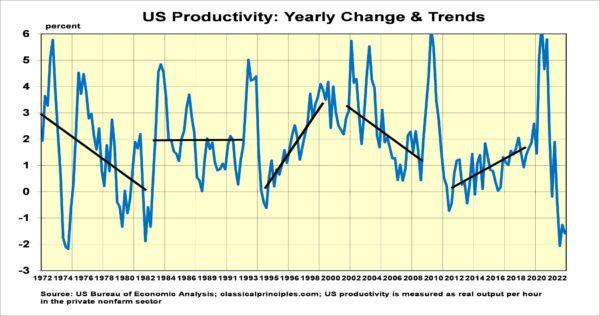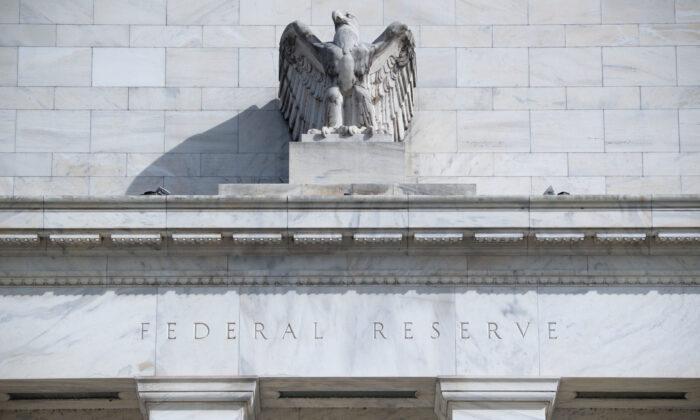Politicians’ knee-jerk tendency is to spend money. They receive credit for accomplishing something while spending other people’s money. Economists often help politicians by promoting the myth that federal spending stimulates the economy. In fact, federal spending consistently weakens the economy, lowers living standards, and often creates serious problems.
The Historical Record
Boom to Bust
The earliest attempt to use federal spending to stimulate the economy was in 1913. President Woodrow Wilson was convinced that more government spending and regulations would improve the economy. Over the course of his administration (1913–21), federal spending increased five times faster than total spending (GDP). After eight years, Wilson’s reliance on more government brought an abrupt end to the prosperity that preceded his failed experiment, and the prosperity that would follow.Bust to Boom
In 1920, federal spending was $6 billion. During the 1920s, free-market politicians voted to cut the federal spending by more than 50 percent. These massive cuts ushered in a decade of unprecedented prosperity known as the Roaring Twenties.Boom to Bust
Federal spending made a comeback under President Herbert Hoover. His first budget, beginning in mid-1929, increased federal spending by 6 percent at a time when total spending was declining by 2 percent. From 1929 to 1933, federal spending increased by 47 percent, while total spending (GDP) fell 42 percent. Hoover also signed the infamous Smoot-Hawley Tariff Act of 1930, which implemented protectionist trade policies and consequently undermined international trade. The combination of Smoot-Hawley along with substantial increases in federal spending contributed to the onset of the Great Depression.World War II
With the outbreak of the war, a surge in military spending led to a sharp decline in unemployment. Wartime spending can be essential to preserving freedom. However, it should not be confused with creating prosperity. From 1940 to 1945, federal spending increased by almost 900 percent. Amid this massive increase in federal spending, real consumer spending per worker fell by 11 percent.Another Boom
After the War, the federal budget was cut in half. Prosperity returned. Strict limits on federal spending in the 1950s and early 1960s led to what was termed the golden period of American prosperity. The massive Interstate Highway System program, beginning in the late 1950s, was a rare exception of a highly beneficial federal program. It was undertaken without federal spending exceeding spending in the rest of the economy.More Problems
In the mid-1960s, federal spending soared amid a combination of the War on Poverty and the Vietnam War. The negative impact of the failed War on Poverty continues to this day after leaving in its wake the destruction of the traditional family and a work ethic.Throughout the 1970s, reliance on the federal spending and regulations continued. The end result was President Jimmy Carter’s assessment of an “economic malaise” with soaring inflation and declining living standards. The malaise ended after President Ronald Reagan reversed policies by cutting taxes and placing limits on federal spending and regulations.
Why Federal Spending Fails the Economy
Private sector incomes are the original source of all income, including the income available to government. Government spending involves the transfer of income to government from those in the private sector who created the income. When government spending increases faster than spending in the rest of the economy, it inevitably crowds out the private sector’s ability to generate output, thereby undermining the source of economic growth.The Current Federal Spending Failure
Many politicians have celebrated the surge in federal spending and regulations that began in 2020. This surge is the primary reason for the recent decline in living standards. The Congressional Budget Office (CBO) will soon provide its official estimate for federal spending in 2023. My guestimate is spending will amount to $6.3 trillion.Even with spending at this level, there is some good news. Federal spending would be only slightly higher, about 0.4 percent, than in 2022. The main reason for the slowdown is the elimination of COVID-related “stimulus” funds from a year ago. Unless total spending collapses in the upcoming recession, federal spending this year will grow slower than spending in the total economy.
Unfortunately, we still have to consider the years from 2019 to 2023. During these years, annualized growth in federal spending was 9 percent, while growth in total spending (GDP) was only 5.7 percent. This excess of federal spending over total spending amounts to a cumulative shift of $5.5 trillion transferred from the productive private sector to government.
This shift in funds, along with the growth of regulations, has produced a sharp downward move in productivity. Productivity is the lifeblood of every economy. It is the source for all increases in living standards.
The following chart shows yearly percent changes in productivity. It shows the strong tendency for productivity to improve when federal spending has been contained. In contrast, it shows productivity slowing or declining during periods when federal spending grew faster than spending in the overall economy. The 1.5 percent decline in productivity in the past year is the primary reason for the current decline in living standards.
The evidence is clear: Excessive increases in federal spending and regulations do not stimulate the economy. They undermine the private sector’s ability to increase living standards. The single most important thing Congress can do to promote prosperity is to constrain or reduce federal spending and regulations.





